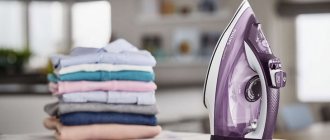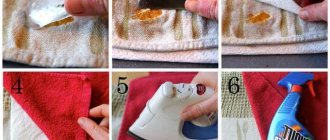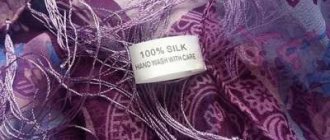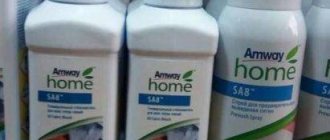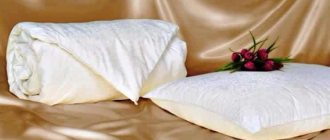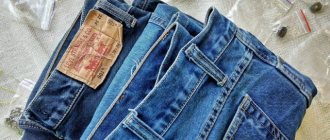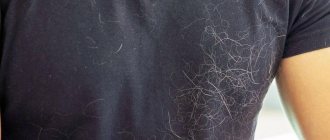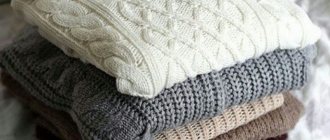Linen is an excellent material for clothing, because it is a natural fabric that does not cause allergies and allows the skin to breathe. At the same time, it looks presentable and elegant. A white linen suit or trousers will be the most suitable option for a walk or work on a hot summer day.
In addition, thick, beautiful fabric is often used as a tablecloth. A white linen tablecloth will brighten up every table and dinner party.
Linen is distinguished by its high strength and durability, so with proper care the fabric will last for several decades. But white material gets dirty easily and gets dirty quickly. Even a minor stain can ruin the appearance of the item.
In addition, the white color gradually turns yellow or gray. To return things to their former luxurious and presentable appearance, you need to update the fabric. Let's find out how and with what to bleach linen at home.
Laundry soap
The simplest and most affordable method of whitening, which, by the way, is used in restaurants, is to wash stains with laundry soap. The tablecloth must be moistened, hung on a rope, and then all dirt must be washed off.
The soaped textiles must sit for several hours, and then all marks are washed out by hand. All that remains is to wash the item in the washing machine, adding a small amount of bleach.
Whitening using baking soda
The main method, which has clear advantages over all others, has always been the method using baking soda. For approximately 7 liters of water at approximately 40 degrees, you need to take 6-7 tablespoons of baking soda and stir until completely dissolved. You can also pour in one tablespoon of hydrogen peroxide, this will give the solution more whitening effect. Soak the contaminated item in this solution and do not touch it for two hours. Apply a small amount of baking soda to heavily soiled areas and rub thoroughly. In case of strong yellowing, it is allowed to boil the items briefly in the solution used. It is worth remembering that it is not advisable to use boiling on wardrobe items, as well as on synthetic fabrics and wool products. It is best to boil bedding, kitchen and bath towels and socks.
Dish gel
Most often, yellow spots remain from fats and vegetable oil. Dish gel perfectly dissolves fats and will help remove even the most stubborn stains.
You should soak the tablecloth in warm water, adding a few tablespoons of the product. The item should lie in the solution for several hours, or preferably overnight. In the morning, you can wash the tablecloth in the washing machine or by hand.
How to bleach linen
Washing with bleach is the easiest way. However, this method should not be used too often, as bleach ages and destroys the fabric. Frequent use can cause linen items to look worn out and unattractive.
In addition, not every item is safe to wash with chlorine bleach. Therefore, be sure to check the washing conditions on the label or tag. If you choose this method, choose high-quality and more gentle oxygen bleaches without chlorine.
Ammonia is an effective and gentle way to get rid of yellowness. Add alcohol to soapy water with powder at the rate of one tablespoon of ammonia per liter of water. Soak the linen fabric in the resulting solution for several hours. Instead of ammonia, you can use turpentine.
Add two tablespoons of turpentine to soapy water, soak the flax for 8-10 hours and then wash as usual. Turpentine and ammonia give linen items freshness and a snow-white color. For greater effect, choose special powders for white fabrics with a bleaching effect.
To bleach linen, you can add a little blue to the rinse water. Today, in a household chemicals and cosmetics store you can easily find a special blue dye for hand and machine washing, as well as similar fabric softeners. This product will effectively eliminate yellowness and return the white color to things.
For bleaching, use a weak solution of vinegar or hydrogen peroxide. In the first case, flax is soaked in 7% vinegar for two to three hours. Then the items are washed in the usual way and rinsed thoroughly in clean, cool water.
Hydrogen peroxide is a longer method, since the material will have to be soaked for a day. Dilute three tablespoons of peroxide in a liter of water. This is a very effective method, and after soaking things become fresh and white. They will look like new!
A little potassium permanganate is added to hot water along with washing powder, and the color of the water becomes slightly pink. After normal washing, linen items are placed in this solution and covered with polyethylene. When the water dries, take out the flax and rinse several times.
Many people are interested in how flax was bleached in the old days. Previously, ash was used for this. The material was placed in hot water mixed with wood ash and left in a warm place for 8-12 hours. The linen was then washed and laid out in the sun to fade during the day. After this, the fabric was washed again and beaten with special rollers.
Ammonia and glycerin
Often yellow stains from coffee or tea appear on a snow-white tablecloth. You need to mix 1 part ammonia and 4 parts liquid glycerin, which can be purchased at a pharmacy.
Apply the mixture to the stain and leave for an hour. After the time has passed, wash the stain with laundry soap.
You can also use a mixture of glycerin and salt, taken in equal parts. The composition is applied to the stain, left for about 30 minutes, and then the stains are washed away.
Reasons for changes in white tint on fabric
Experts identify a number of reasons that provoke the appearance of gray and yellow spots.
Why do things change color? This list includes:
- Lack of proper care. Items made from white fabric must not be washed together with colored items. Remains of coloring pigments accumulate in the form of gray and yellow spots in the area of folds and creases. A large amount of paint from a colored item can completely fill a light shade;
- Soaking products in one container. Each model is made from fabrics of different composition. The result of such washing depends on the density and quantity of natural components. For example, cotton can be washed simultaneously in the same container with linen and chintz. Items made from cambric, silk and velvet must be washed separately;
- Wrong choice of detergent. For each type of fabric, a certain type of soap composition is provided, which, as a result of heating, enhances its effects. Today on store shelves you can find a huge variety of capsules and different types of bleaches. Experts recommend choosing care products carefully. For example, products made from linen, cotton, chintz and satin can be bleached using chlorine-containing compounds. For synthetic fabrics, the percentage of bleach should be present in a minimum amount. The fact is that during the heating process, artificial fibers become gray;
- Long-term storage. Surely everyone has noticed that if something white is not used for a long time, then yellow, orange and gray spots appear on its surface. This phenomenon is due to the fact that small particles from old stains change their color over time. Hanging products on special hangers will help prevent this phenomenon;
Regular whitening. The use of aggressive methods leads to thinning of fabric fibers, which leads to the opposite effect. The fact is that powders and bleaches contain molecules that, when they come into contact with fabric, form an optical illusion of snow-white color.
Over time, they lead to damage to the top layer.
Boiling
Boiling is an old method of our great-grandmothers, which helps to whiten various yellow stains and restore the whiteness of the fabric.
For boiling you will need:
- 100 g brown soap.
- Large grater.
- Boil down.
- A wooden stick to stir laundry.
- Water.
Grate half a bar of soap and dissolve in warm water. Fill a large saucepan or boiling pot with water and pour the soap solution into it. The soap must dissolve well, otherwise it may leave yellowish stains on the laundry.
When the soap solution begins to boil, immerse the tablecloth in it and boil, stirring constantly. After boiling, the tablecloth is rinsed in cold water. When boiling, you can add lemon juice or salt to the pan to make the tablecloth dazzling white.
Yolk and glycerin
You can remove yellow marks from a white tablecloth using raw yolk and liquid glycerin.
Beat the yolk until foamy. And then the same amount of glycerin is introduced into it. The mixture should have a uniform consistency. All contaminated areas are lubricated with the composition. After 30-40 minutes, the item is rinsed and washed by hand with bleaching powder.
Recommendations for washing white items
One of the basic rules in caring for white clothes is high-quality washing. So:
- Always sort your laundry well. Even dull clothes can accidentally stain snow-white, so it’s best not to take risks. Also, never combine clothes of different compositions in one wash cycle;
- Use products specifically for white linen: they have a special formula that gently cleanses and gently whitens;
- If you decide to whiten things using additional products, never combine them.
Kerosene
But if gentle folk remedies do not help to cope with pollution, then you can correct the situation with the help of kerosene or household gasoline. These substances are suitable for particularly persistent and long-standing stains.
To remove stains, you must use only highly purified household gasoline. Regular automobile fuel is not suitable for these purposes. You can buy household gasoline at a hardware store.
The product is applied liberally and left for about 20-30 minutes. After this, the textiles are rinsed and washed well. It is best to air dry the product to remove the unpleasant odor.
Chemicals for whitening at home
Whitening using improvised means has a big disadvantage - it requires time to prepare and carry out the procedure itself. Chemical products work much faster and are often more effective.
We use whiteness
Although whiteness has an unpleasant odor, it does not give way to other products on the shelf and is still in demand. Use it in the required concentration to bleach cotton and linen.
Oxygen-containing
These are more modern bleaches that are safe not only for the environment, but also for the fabric itself. They can be used for white and colored items.
Chlorine-containing
These bleaches can only be used on cotton and linen. Use the minimum concentration of the product, as it has a detrimental effect on things.


